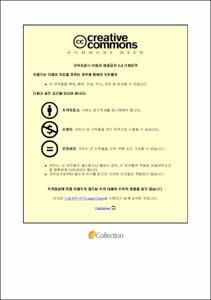고기능성 구조용 TiC-steel 복합재료 개발을 위한 미세조직 변화 메커니즘에 대한 연구
- Alternative Title
- A Study on Microstructure Evolution Mechanisms fortheDevelopment of High-Function Structural TiC-Steel Composite
- Abstract
- 본 연구는 가스압 함침된 TiC-steel 복합재료의 제조과정동안 발생하는 TiC 입자 조대화와 형상 변화에 대하여
고찰하였으며, 함침 공정동안 발생하는 주요 미세조직 변화 기구를 규명하였다. TiC-steel 복합재료 제조를 위한 함침
공정동안 상당한 TiC 입자 조대화를 입도분석을 통해 정량적으로 확인하였으며, 조성 분석 및 열역학 계산을
기반으로, TiC 입자 조대화에 대한 기본적인 미세조직 변화 메커니즘은 계면에너지 안정화를 기반으로 한 용해재석출(Ostwald ripening) 기구와 함께 상의 안정화 과정을 함께 수반한다는 것이 확인하였다. TiC-steel 복합재료에서
관찰된 Core-rim 구조는 기존의 TiC core로부터 함침 공정동안 rim으로 형성되는 (Ti,M)Cx (M=치환형 원소)상에 의해
개발되는 것이며, TiC가 포화된 액상 기지 steel로부터 형성되는 (Ti,M)Cx rim은 stoichiometric TiC에 비해 Fe가 소량
고용되고, C가 부족한 (Ti,M)Cx 상임을 확인하였다. 또한, (Ti, M)Cx 탄화물을 형성에 강한 경향성을 보이는 Mo, V, W의
유무 및 농도에 따라 성장하는 TiC 입자의 형상학적 차이를 관찰하였다. 곡면의 계면을 가지는 구 형상의 TiC 입자가
개발된 TiC-steel 복합재료는 rim이 성장함에 따라 (Ti,M)Cx rim에서의 Mo, V, W의 농도가 감소하는 것을 알 수
있었으며, planar한 계면을 가진 각진 cube 형상의 TiC 입자가 개발된 TiC-steel 복합재료는 rim 성장에 따른 Mo, V, W
농도에 있어 반대의 경향을 보인다는 것을 확인하였다. 열역학 계산을 기반으로 다른 조성의 4종의 Steel의 초기 액상
형성 거동의 차이로부터 새롭게 형성되는 (Ti,M)Cx rim 내 Mo, V, W의 농도 차이가 기인된다는 것을 확인하였으며,
이는 곧 TiC의 (100)면과 (111)면의 계면에너지 관계를 변화시켜 TiC의 형상학적 변화를 야기함을 확인하였다. 본
연구에서는 위에서 언급한 미세조직적 변화 현상에 대한 깊은 고찰을 바탕으로 steel의 조성의 tailoring을 통한 TiC
grain의 형상을 제어할 수 있음을 제안한다.
- Issued Date
- 2022
- Awarded Date
- 2022. 8
- Type
- Dissertation
- Publisher
- 부경대학교
- Alternative Author(s)
- Lee, Jihye
- Affiliation
- 부경대학교 대학원
- Department
- 대학원 신소재시스템공학과
- Advisor
- 권한상
- Table Of Contents
- 1. INTRODUCTION 1
2. LITERATURE REVIEW 5
2.1. Titanium carbide 5
2.2. Steel 12
2.2.1. Carbon steel 12
2.2.2. Tool steel 12
2.2.2.1. Cold working tool steel 13
2.2.2.1.1. High-speed tool steel 13
2.2.2.1.2. Cold working mold steel 13
2.2.2.2. Hot working tool steel 14
2.3. Particulate reinforced metal matrix composites 15
2.4. Fabrication of metal matrix composites 17
2.4.1. Classification of reinforcement insertion method 17
2.4.2. Classification for fabrication process 17
2.4.2.1. Solid-state fabrication process 18
2.4.2.2. Liquid-state fabrication process 18
2.5. TiC ceramic particulate reinforced steel composites 20
2.6. Ostwald ripening 22
3. EXPERIMENTAL METHOD 23
3.1. Fabrication of infiltrated TiC-Steel composites 23
3.2. Microstructure and chemical composition analysis 29
3.3. Size distribution analysis 30
3.3.1. 3D-size distribution evaluation of TiC raw material 30
3.3.2. 2D-size distribution evaluation of TiC grains on TiC-Steel Composite 30
3.3.2.1. Training for reinforcement determination 30
3.3.2.2. Extraction of TiC reinforcement 30
3.3.2.3. Calibration for the distortion of 2D size distribution 31
3.4. Thermodynamic calculations 33
4. RESULTS AND DISCUSSIONS 34
4.1. Microstructure evolution-Coarsening 34
4.1.1. Microstructure of TiC powder, preform and Composite A 34
4.1.2. Quantitative evaluation on the coarsening of TiC grains 36
4.1.3. Chemical composition analysis 39
4.1.4. Thermodynamic calculations 42
4.1.5. Compositional alternation of TiC grain during coarsening 46
4.1.6. Additional coarsening during solidification process 49
4.2. Effects of Mo, V, and W on the TiC morphology 52
4.2.1. Development of core-rim structure 52
4.2.2. Morphological difference of TiC grains 59
4.2.3. Compositional gradient of Mo, V, and W in rim according to morphological difference of TiC grains 61
4.2.4. Correlation between the initial liquid formation behavior and the composition of (Ti,M)Cx in rim 64
4.2.5. Morphological evolution mechanism during the coarsening of TiC 67
5. CONCLUSIONS 73
REFERENCE 75
- Degree
- Master
- Files in This Item:
-
-
Download
 고기능성 구조용 TiC-steel 복합재료 개발을 위한 미세조직 변화 메커니즘에 대한 연구.pdf
기타 데이터 / 6.53 MB / Adobe PDF
고기능성 구조용 TiC-steel 복합재료 개발을 위한 미세조직 변화 메커니즘에 대한 연구.pdf
기타 데이터 / 6.53 MB / Adobe PDF
-
Items in Repository are protected by copyright, with all rights reserved, unless otherwise indicated.